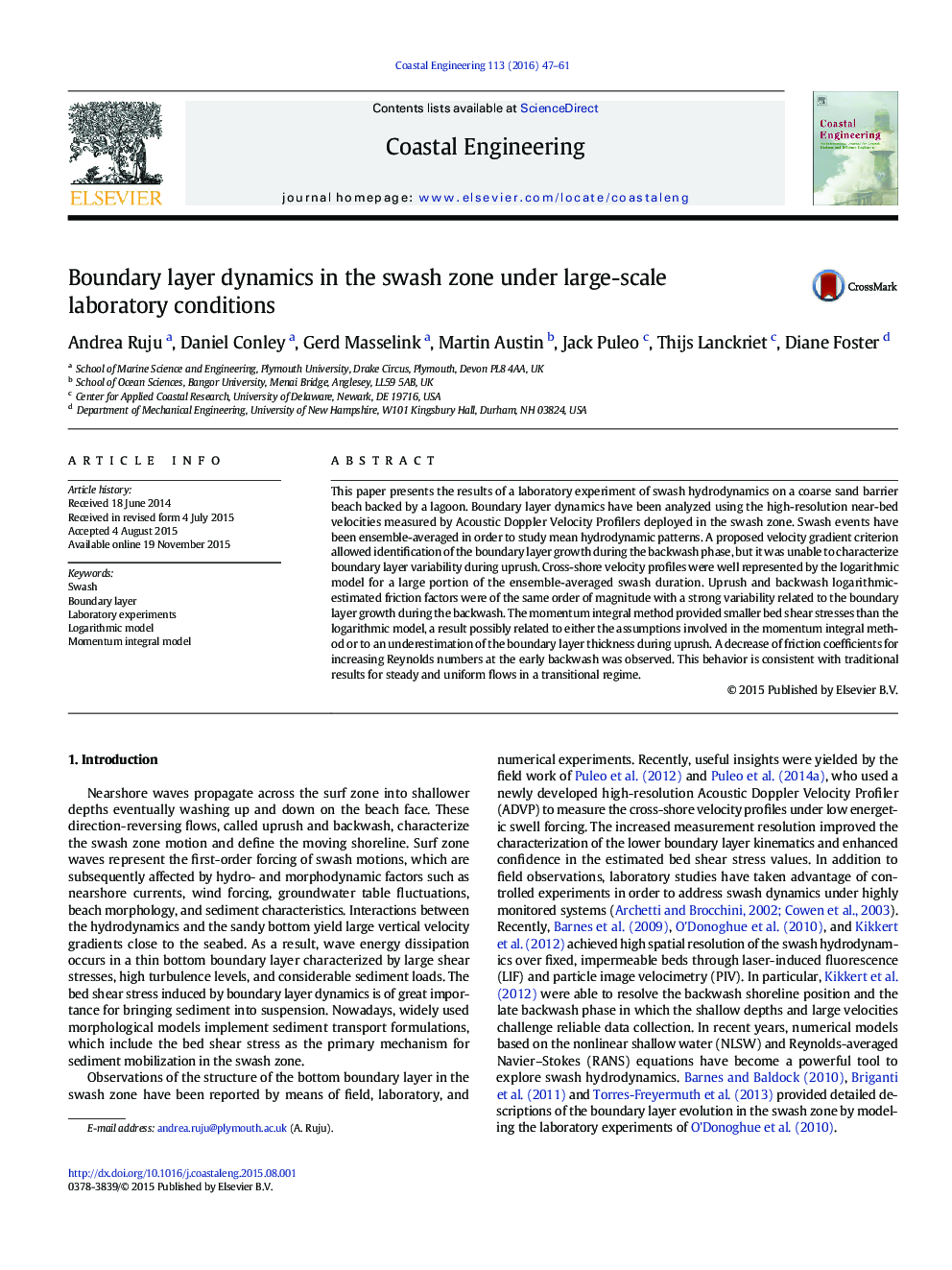| Article ID | Journal | Published Year | Pages | File Type |
|---|---|---|---|---|
| 1720540 | Coastal Engineering | 2016 | 15 Pages |
•A laboratory experiment was carried out in a large-scale wave flume.•Velocity profiles have been used to analyze swash boundary layer dynamics.•The momentum integral method performs poorly during uprush.•A varying groundwater table affects swash dynamics and friction factors.•Friction coefficients behavior is consistent with traditional formulations.
This paper presents the results of a laboratory experiment of swash hydrodynamics on a coarse sand barrier beach backed by a lagoon. Boundary layer dynamics have been analyzed using the high-resolution near-bed velocities measured by Acoustic Doppler Velocity Profilers deployed in the swash zone. Swash events have been ensemble-averaged in order to study mean hydrodynamic patterns. A proposed velocity gradient criterion allowed identification of the boundary layer growth during the backwash phase, but it was unable to characterize boundary layer variability during uprush. Cross-shore velocity profiles were well represented by the logarithmic model for a large portion of the ensemble-averaged swash duration. Uprush and backwash logarithmic-estimated friction factors were of the same order of magnitude with a strong variability related to the boundary layer growth during the backwash. The momentum integral method provided smaller bed shear stresses than the logarithmic model, a result possibly related to either the assumptions involved in the momentum integral method or to an underestimation of the boundary layer thickness during uprush. A decrease of friction coefficients for increasing Reynolds numbers at the early backwash was observed. This behavior is consistent with traditional results for steady and uniform flows in a transitional regime.
